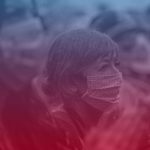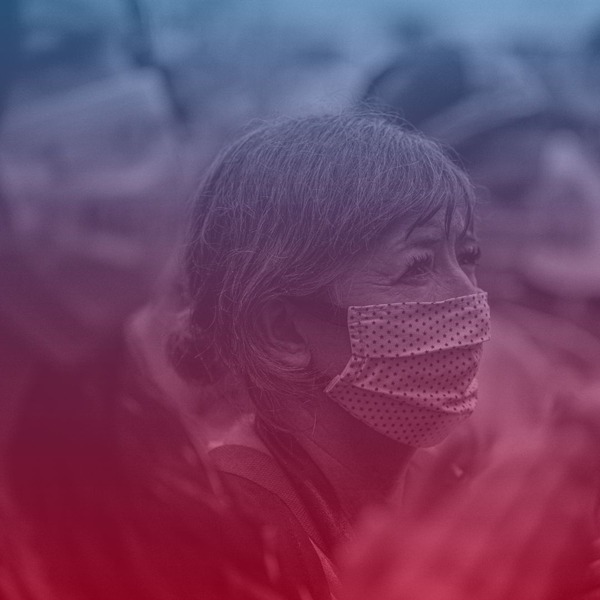
Written by Pablo Abril Martí
Introduction: Two Chinas in conflict
Last October, Chinese president Xi Jinping defined China’s reunification with Taiwan as a “historical task that must be fulfilled and definitely will be fulfilled”, (The Guardian, 2021). In this passage, he is referring to a conflict that started back in the Chinese Civil War, in which Mao Zedong failed to invade Taiwan. The effects of that war are still felt today. On 16th November 2021, Zhang Min, head of the Chinese Mission to the EU, threatened to “resolve the reunification of our country”, about the China-Taiwan conflict, but what appears to be even more significant, from my point of view, is that he explicitly did not rule out the use of force to resolve the reunification issue, when asked (Emmott, 2021). Likewise, Taiwan’s defence minister Chiu Kuo-cheng warned about the record number of military jets into Taiwan’s air defence zone for four consecutive days in October, which may be received as a worrisome threat. He concluded that the military tension between China and Taiwan is at its forty years peak, and he even warned about how China could garner enough power to follow suit with a full-scale invasion by 2025 (McDonell, 2021). Thus, considering the possibility of a military conflict, the role of the European Union might become extremely important, as EU diplomatic relations with China will define the future of the foreign policies of member states. This is especially true considering how the Chinese market has been the major growth driver for many European companies over the last few years, making it an important partner (Zenglein, 2020).
A historical overview
The Chinese Civil War is an important event to discuss in order to understand the current diplomatic conflict. This civil war lasted from 1927 to 1949 and ended with the victory of the communists of Mao Zedong. Chairman Mao, founding father of the People’s Republic of China, rose against the government of Chiang Kai-shek, the president of China–which was, at that time, still called Taiwan– in various periods between 1928 and 1975. Mao’s objective was to end the war with the invasion of Taiwan, where Chiang Kai-shek escaped to. Since then, the tension between China and Taiwan has only kept increasing, especially in the last months of 2021.
After the end of the Chinese War in 1949, the Second World War’s peace treaties further heightened Chinese-Taiwanese tensions when Japan, as a defeated country, had to give Taiwan back to China, as stated in the Sino-Japanese Peace Treaty signed in 1952 (Sheu, 2014). Thus, Taiwan became a Chinese territory in the middle of the Chinese Civil War between Mao’s communist forces and the nationalist party Kuomintang, led by Chiang Kai-shek (Culver, 2020). This conflict ended with mainland China entirely occupied by ‘Mao’, and Chiang’s government exiled in Taiwan (Easton, 2017). The next objective for Mao was to finish the Civil War with the invasion of the island, but Chiang’s army managed to resist the attacks. One relevant reason that prevented Mao from invading Taiwan was that Red China designated all its efforts to support communist North Korea in the Korean Civil War that started in 1950 (Easton, 2017). Since then, China has not let go of their aim to integrate Taiwan as part of their territory in what is a well-known international dispute with many countries divided between either defending China or defending Taiwan’s sovereignty, with a strong presence of the United States defending Taiwanese independence from communist China (Bush, 2002).
The international community has historically been hesitant to take a stance against Chinese policy towards Taiwan due to its emergence on international markets. Whereas, as a communist country, it remained isolated from many capitalist trade partners as a result of the Cold War, this started to change when China’s government adopted the “Open Doors Policy” in 1978, altering its development strategy from self-sufficiency to one of active participation in the world market (Huan, 1986). Since then, the emerging country has grown enormously, ultimately becoming the giant economy we know today and an attractive trading partner. Its gross domestic product rose from $150 billion in 1978 to $8,227 billion in 2012. China’s Open Doors policy was multi-faceted, including investment in enterprises with international ambitions, efficient savings, and rising productivity through rebalanced growth and the rise of domestic consumption as a consequence of improving living standards by creating quality jobs. In other words, the implementation of a number of intelligent economic measures changed not only the wealth of the Chinese state but also that of its citizens (Purdy, 2013). The increasing Chinese relevance in the world market since 1978 made its new trade partners more reluctant to have diplomatic ties with Taiwan, its historic antagonist, with the Vatican has been the only European country to have diplomatic relationships with it at the time (Lau M., 2021). On the other side of the Atlantic, the United States also chose the attractive trading partner China over diplomatic ties with Taiwan, after American President Richard Nixon ended 25 years of non-communication with the People’s Republic of China when he arrived in Beijing. This was a major breakthrough for the establishment of diplomatic ties with China, but at the cost of relations with Taiwan. In 1979, when the United States established full diplomatic relations with China, it agreed to no longer recognize Taiwan. This decision can be explained not only by the perspective of trading with China but was also an answer to China’s increasing disputes with the Soviet Union–the United States’ antagonist in the context of the Cold War (Schneider, 2020). The United States was not the only country to follow this course, like many other countries that considered China as an attractive trading partner did the same in trying to establish better relations with China and a better approach to China (Hale, 2020). China continued to grow economically throughout the decades and managed to enter the World Trade Organization (WTO) in 2001. Since then, China’s relevance in international diplomacy and the global economy has only grown and entering the WTO has only enabled it to grow further, as its GDP went from 13% of the US GDP in 2001 to 73% twenty years later (Sapir & Mavroidis, 2021).
The COVID-19 pandemic: a change of paradigm
Although the economic growth of China and its diplomatic relevance continued to grow for many decades, the COVID-19 crisis has changed this tendency. When the pandemic started in China in 2019, experts began criticizing the Chinese government’s lack of cooperation, whereas Taiwan was deemed a helpful and responsible ally in fighting the pandemic, controlling borders, and reducing cases (Hale, 2020). Because of this, the European Union has made some coordinated moves to strengthen links with Taiwan (Ferenczy, 2021). This is a great break from the EU’s One-China Policy, which recognized there is one China represented in international organizations, with Beijing acting as the main interlocutor for Hong Kong, Macau, and Taiwan (Rasmussen, 2020). This policy was understood as the diplomatic conclusion of the so-called “1992 consensus”: a reunion between semi officials representatives of both mainland China’s Popular Republic of China and Taiwan’s Republic of China. Despite the fact this reunion is considered the diplomatic base for the One-China policy, ROC and PRC differ heavily on the agreements: while ROC stated there was “one China, different interpretations”, PRC claimed to conclude after the meeting the agreement as there is only one China, and PRC is the only legitimate representer (Wang, Wu, Yeh, & Chen, 2018). This approach was challenged when progressive tensions emerged between China and the EU, in which Taiwan functioned as a buffer state between the two big actors. In parallel, there is the commercial conflict between the United States and China, in which multiple sanctions have been imposed alongside public hostile declarations. This “trade war” began back in 2018 when Trump raised solar panel tariffs to the Asiatic country, soon followed by many other tariffs in, for example, the still and aluminum imports (Brown, 2021). The tensions have even been described as a “New Cold War” by some journalists, as it reminds of the Cold War between the USSR and the USA during the second half of the twentieth century (Brands & Gaddis, 2021). The new position acquired by the US on the matter of Taiwan’s status was further reinforced by President Joe Biden’s statement declaring that an invasion of the island would be met by the intervention from the United States. Thus, whereas it was the previous president, Donald Trump, who started hostilities with China in the form of a commercial war after years of cooperation, the Biden administration seems to follow that same line (Lau M., 2021).
The European Union’s approach to China
China has been classified as a “systemic rival” since March 2019, when the European Commission set out ten proposals about the links with China, a document known as the “EU-China Strategic Outlook” (European Commission, 2019). In the same document, Italy was criticized for being too close to the Asian country (Von der Burchard, 2019). EU-China tensions remained on the surface, as exemplified by the decision of the European Union to impose sanctions on China officials due to human rights abuses alleged over the Uyghur population in Xinjiang, where they claimed mass detentions of Muslim Uyghurs in north-western China were happening (Council of the EU, 2021). Those accusations were denied by the Asian country, with counter-sanctions to EU member states (Emmott, 2021). In May, the European Parliament went even further by voting to freeze any relevant investment deal with China, despite this harming the European market, as China is one of the biggest economies in the world (Ni, 2021). Five months later, none of the actors are willing to lift any sanction and the diplomatic conflict is increasing between them through constant public threats (Emmott, 2021).
As the relations between the European Union and China worsened, the European approach to Taiwan became stronger through multiple diplomatic visits from Taiwan’s officers around the European Union’s member states, especially in October 2019. On the week from the 25th to the 29th of October, Taiwan’s Foreign Minister Joseph Wu visited Prague and Brussels. In Prague, he signed a total of five memorandums of understanding, on topics ranging from cybersecurity to green technology. Wu was later received in Brussels on the 28th to hold meetings with European Union policymakers on Asia-Pacific affairs, which were reported as “informal meetings” by European Union spokespersons (Lau, 2021). Moreover, other European countries like Lithuania have made efforts to evolve diplomatic relations with Taiwan, as they permitted it to set up representation under its current name, instead of “Taipei representative office”, as it is usually done (Benner, 2021). The European Parliament even backed a resolution for stronger ties with Taiwan, in which Taiwan was qualified as a “democratic partner in the Indo-Pacific” (Qin & Erlanger, 2021). Another example is when the High Representative of the Union for Foreign Affairs and Security Policy, Josep Borrell, outlined the importance of the microchips made in Taiwan, qualifying them as indispensable for the European Union’s development, which is one area of collaboration between the EU and Taiwan (Lau, 2021). These are signs that European countries are changing their approach to Taiwan. In fact, they may be understood as a geopolitical move against China, a logical continuation to the exchange of sanctions between the EU and China, as Taiwan is known to be an issue in which China will not make concessions.
The movements from the European Union to develop diplomatic relations with Taiwan got an answer from China in the form of strong diplomatic criticism: on the 16th of November, Zhang Min warned that the European Union must remove every sanction for ratifying a new SINO-EU investment, a comprehensive agreement between the two actors of high relevance for European affairs (Emmott, 2021).
Conclusion
The conflict between China and Taiwan remains unresolved with clear positions of hostility. Both the European Union and the United States have strengthened their diplomatic relations with Taiwan simultaneously, which may endanger China’s diplomatic position. In fact, the United States’ position over this conflict seems consolidated as it is one of the few policies that previous president Donald Trump and current president Joe Biden share. Thus, we seem to be facing a change of paradigm in which China does not have the same international position as it had for the last decades. Nevertheless, it continues to fulfill a relevant role in international trade, especially as a strong player in the investment and development of Asia. A possible military intervention from China would change the conflict into an even more complex one, in which actors would be forced to take a stance and, perhaps, even become part of the conflict itself.
References

 What Happened to the Polish Left? An Analysis of the Party’s Ideological Development and Changing Electoral Base
What Happened to the Polish Left? An Analysis of the Party’s Ideological Development and Changing Electoral Base  Struggle for Conservation of Slovenian Minorities in Austria, Italy and Hungary: Why does Multilateral Action Matter?
Struggle for Conservation of Slovenian Minorities in Austria, Italy and Hungary: Why does Multilateral Action Matter?  The Nature Restoration Law: A Significant Milestone or An Example of the EU Green Deal Losing Momentum?
The Nature Restoration Law: A Significant Milestone or An Example of the EU Green Deal Losing Momentum?  The Role of Women in Peacebuilding and Conflict Transformation
The Role of Women in Peacebuilding and Conflict Transformation 


